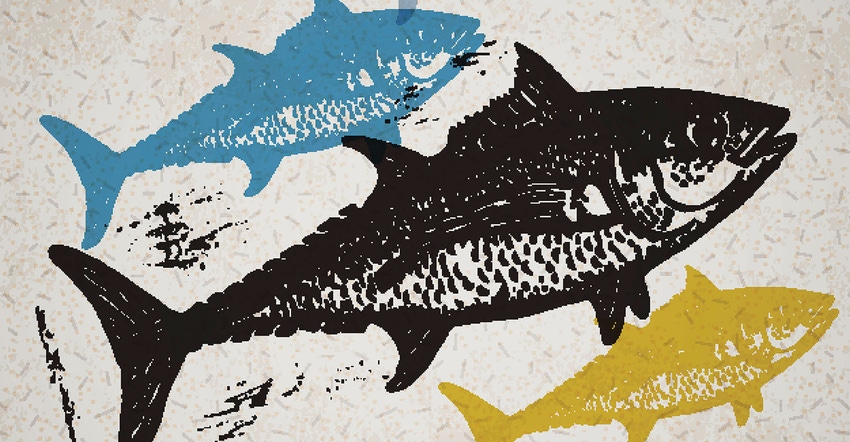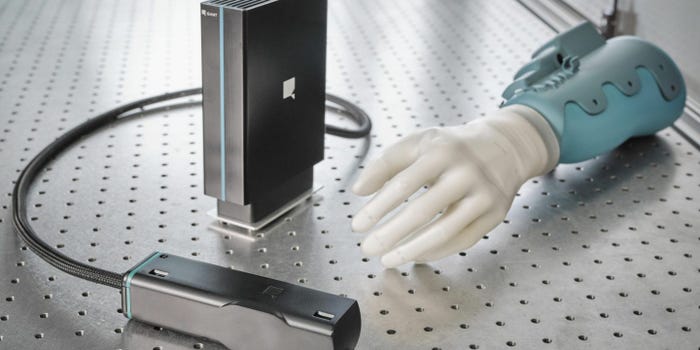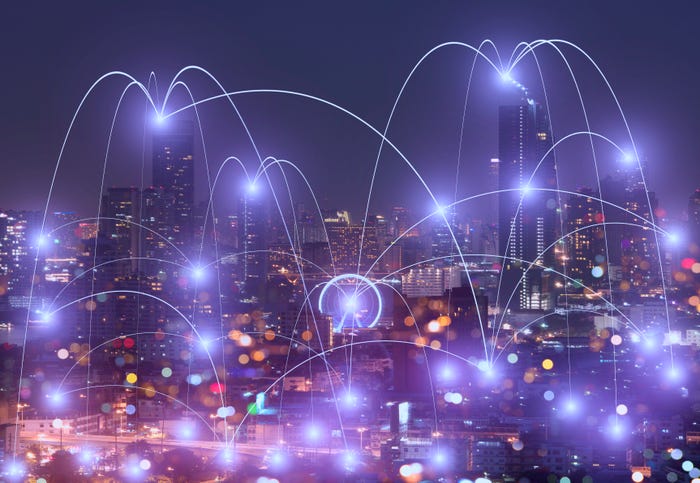Optimists see blockchain use cases spanning nearly every industry imaginable, while skeptics see the technology confined to a limited number of applications.
September 12, 2018

At its core, the Internet of Things represents the digitalization of the physical world, while blockchain, one of the most hyped technologies of late, was designed to enable cryptocurrency transactions without the need for a central authority.
The two technologies, independently, together or in conjunction with AI, promise to transform businesses of nearly all stripes. But gauging technologies’ promise at a relatively early stage of adoption is tricky, especially considering the fluidity of the terms’ definitions and proposed applications. Although IoT is further along than blockchain in terms of adoption, estimating the technologies’ disruptive potential can be challenging, especially when they are used in tandem, making it difficult to answer questions such as: To what extent can IoT blur the lines of the physical world and how good of a fit is blockchain for use with physical assets? Can the technologies disrupt, for instance, how seafood companies locate and track fish? Or lead to increased harvest yields and greater traceability for palm oil plantations?
An SAP analyst and media event dedicated to blockchain considered those themes in a panel discussion focused on blockchain’s potential for supply chain applications. With three of the five panelists hailing from tech companies, the inclusion of digitally-focused executives from Bumble Bee Seafoods and another from a palm oil exporter were the clearest evidence of technology’s far reach.
Blockchain, IoT and Tuna Fishing
The theme of sustainable fishing has gained ground in recent years with groups ranging from the World Wildlife Foundation to Greenpeace, Seafood Watch and the Marine Stewardship Council launching campaigns to combat overfishing.
But how plausible is it that you as a consumer could know with a high degree of authority if a can of tuna you find at a supermarket is more sustainable than another? And how can fishing companies using traditional harvesting techniques ensure they can, first, have a good chance of success and, second, help ensure that the fish they catch is accurately tracked?
Tony Costa, senior vice president and chief information officer of Bumble Bee Seafoods, described how technologically limited the beginning of the fishing supply chain can be. “We have fishermen in the north ends of Indonesia go out on a 25-foot boat with a 25-horsepower engine and go out 5 or 10 miles into the ocean and literally catch tuna by hand,” Costa said.
[IoT Blockchain Summit is the event that’s scaling blockchain for IoT across industry and enterprise. Get your ticket now.]
The manual nature of the work leaves open the possibility for considerable technology-based efficiency gains, Costa said, but overhauling the early phase of the supply chain would represent a considerable shift. During a visit to Indonesia, Costa assumed he could use RFID tags to track individual fish as they arrived from fishing boats. “But the fishermen already cut up the fish out at sea. They put it into bags and wrote their name, date and the location of where they caught that fish.”
Bumble Bee Seafoods hopes to expand its use of technology to drive greater efficiency and transparency throughout the supply chain. “We want to get that data on the blockchain, but then we want to go back to IoT: How can we put sensors on the boat, on the fish, on each piece?” Costa asked. “[IoT] is going to facilitate unbelievable supply chain optimization and integration throughout the process.” One tangible example where Costa sees potential is in helping tuna fishers jointly locate fish. “I have this idea of a Go Fish app,” he said. Because tuna are migratory, fishers could jointly help communicate which ocean locations apparently have more fish nearby. As of now, two fishers could go out in the morning, one could catch five and the other return empty-handed. If fishers could communicate while they are out at sea, they could work together to help triangulate the locations of schools of tuna, Costa said. Meanwhile, blockchain could enable the company to precisely track, say, the provenance of a specific can of tuna. When asked how the company would ensure the accuracy of information entering the blockchain, Costa indicated the company would build upon an existing auditing process.
Data-Driven Palm Oil?
In the panel discussion, Abhishek Singh, head of IT and digital, palm oil at Apical, agreed “IoT is a good supplement to blockchain when it comes to data acquisition,” and said his company was looking for strategies to improve the productivity of each of its trees and plantations. There are well-established business processes in place for such detailed analyses, but they are traditionally manual. “The challenge for us is to move the data from pen and paper to a real-time data acquisition process,” Singh said. The rise of tablet computers, however, has helped ease that transition, enabling workers in the field to take pictures of specific trees and verify data accuracy of harvesting data.
An article from Digitalist magazine notes the palm oil industry is investigating technology-based strategies to boost lagging productivity and to help the industry combat reputation challenges. At present, only 19 percent of palm oil is harvested sustainably, according to the Roundtable on Sustainable Palm Oil.

Other palm oil producers have explored using connected sensors to track water saturation and environmental conditions such as humidity in palm plantations. The Digitalist article notes, for instance, that drone imagery leveraging image analysis and machine learning can be used to create virtual models — digital twins — of each tree on a plantation. The models can be used in conjunction with data from soil sensors, weather stations and satellite images to help inform how individual trees should be fertilized, irrigated and harvested.
The open source, blockchain-focused Hyperledger organization has also considered how distributed ledger technologies could be deployed to close “current gaps in transparency” in the palm oil supply chain. A plantation worker could use a mobile device to track fruit from a given geolocation or even tree while also keeping track of the date and time and the worker’s name.
Ultimately, blockchain’s disruptive potential remains something of an open question. On the one hand, there is, for instance, the optimistic assessment of the authors of “Blockchain: Transforming Your Business and Our World” that the technology can disrupt “almost any industry that deals with some sort of transaction or tracking mechanisms.” The World Economic Forum, on the other hand, believes the technology’s potential is constrained to a narrower set of use cases and recommends the technology not be used for applications with physical assets. Some people see blockchain as “an idealized abstraction of a ledger,” said Zulfikar Ramzan, chief technology officer at RSA. “They see this vast sea of opportunity.”
One of the most popular enterprise blockchain applications is its use in conjunction with IoT technology to spur supply chain traceability and efficiency. A recent SAP survey found supply chain and IoT to jointly be the most promising blockchain use case. The tokenization of blockchain — essentially using distributed ledger technology to track physical assets is a popular research subject and the subject of numerous pilot projects. Ramzan, however, is not convinced of the convergence of IoT and blockchain that is often involved in such projects. “When I hear about IoT applications of blockchain, I think it is weird. I think that is just the wrong application,” he said. “All of these problems get introduced [in trying to merge IoT and blockchain] that people try to sweep beneath the rug. How do you take a physical device and securely identify it using a digital identifier?” he asked. “As soon as you have a process by which that happens, you have to trust that process. You have created this entity that you trust. But the whole point of blockchain is to avoid trust, which is why it is completely decentralized.”
About the Author(s)
You May Also Like


.png?width=700&auto=webp&quality=80&disable=upscale)
.png?width=300&auto=webp&quality=80&disable=upscale)


.png?width=300&auto=webp&quality=80&disable=upscale)